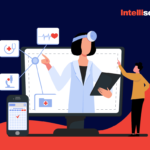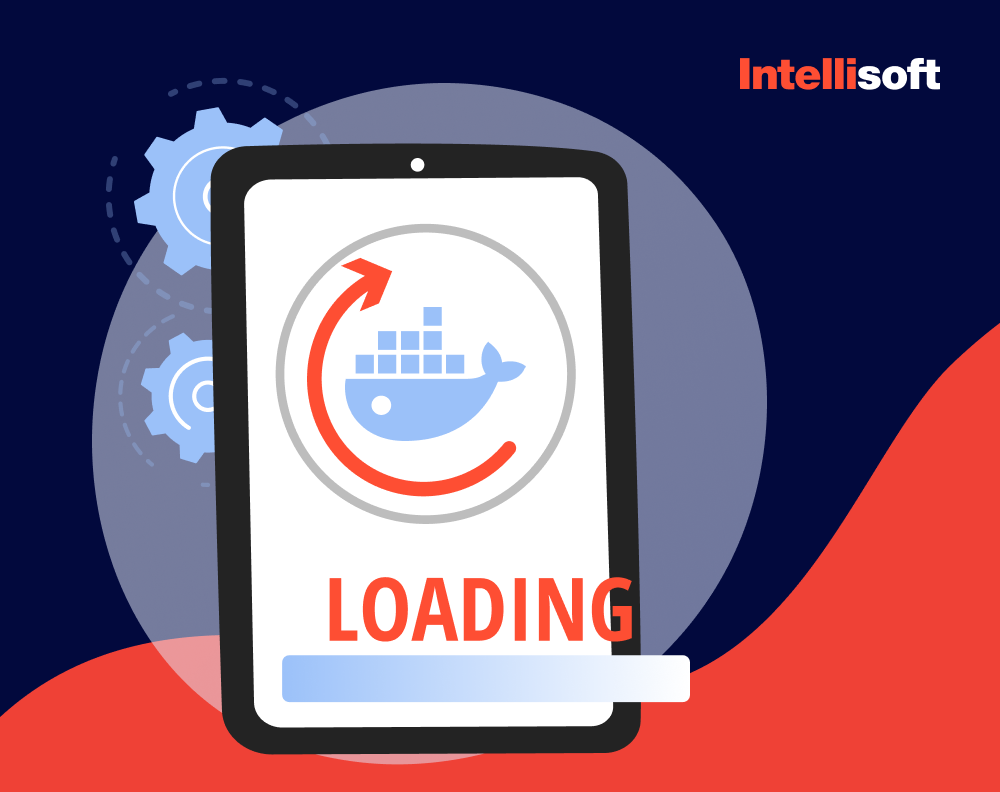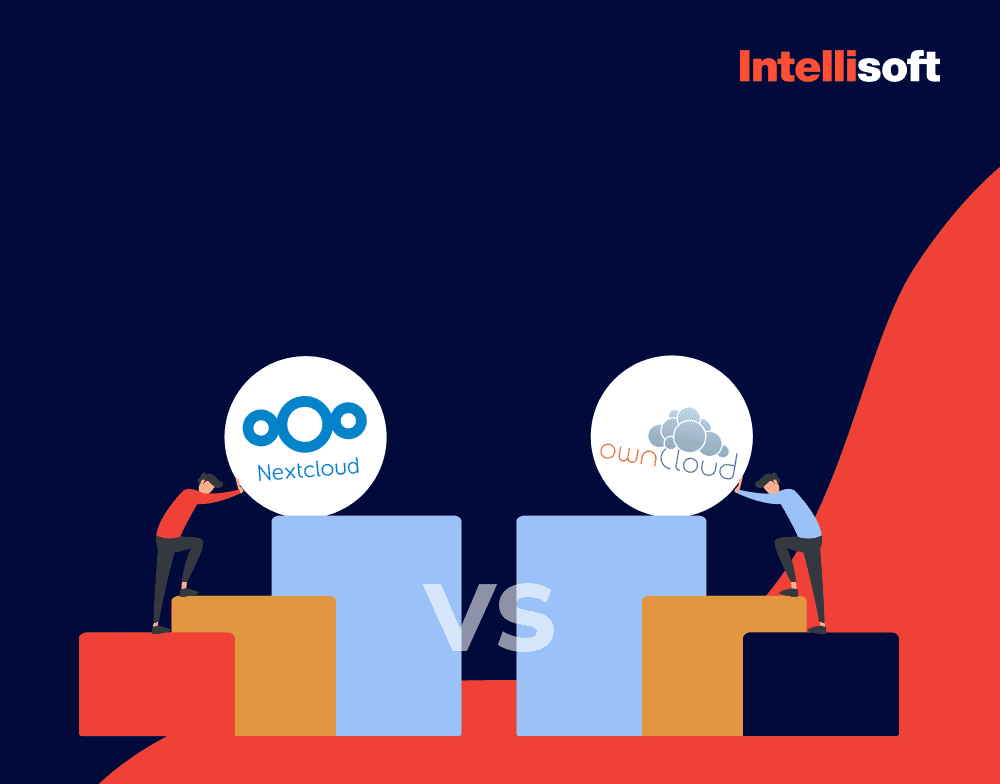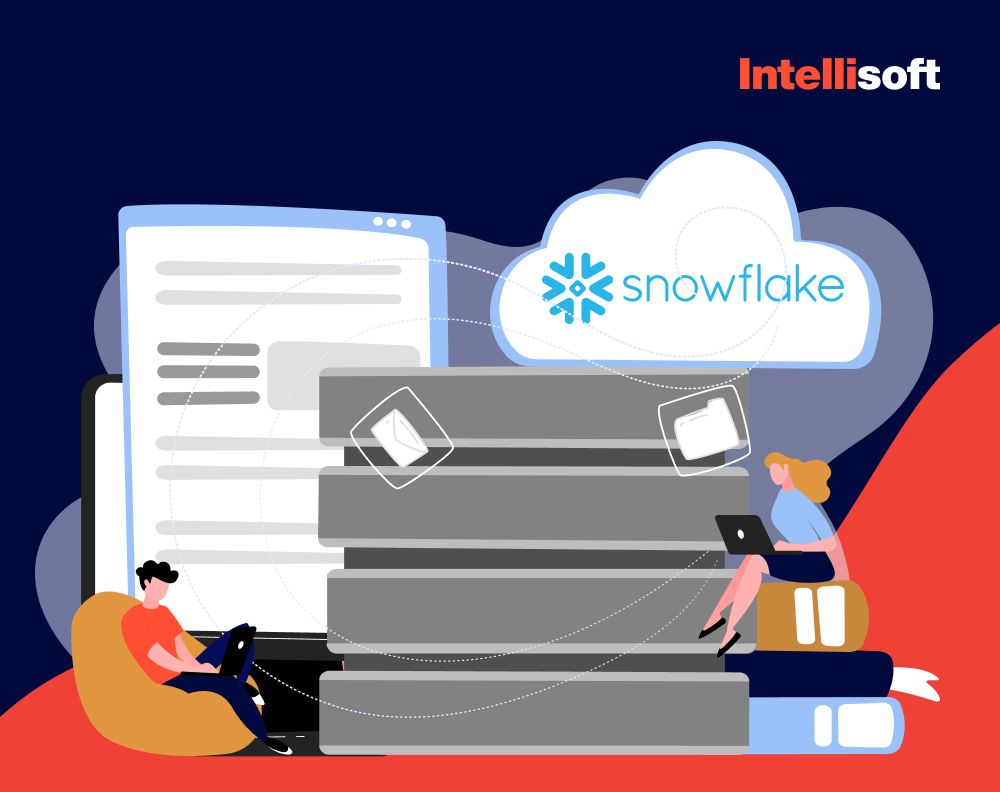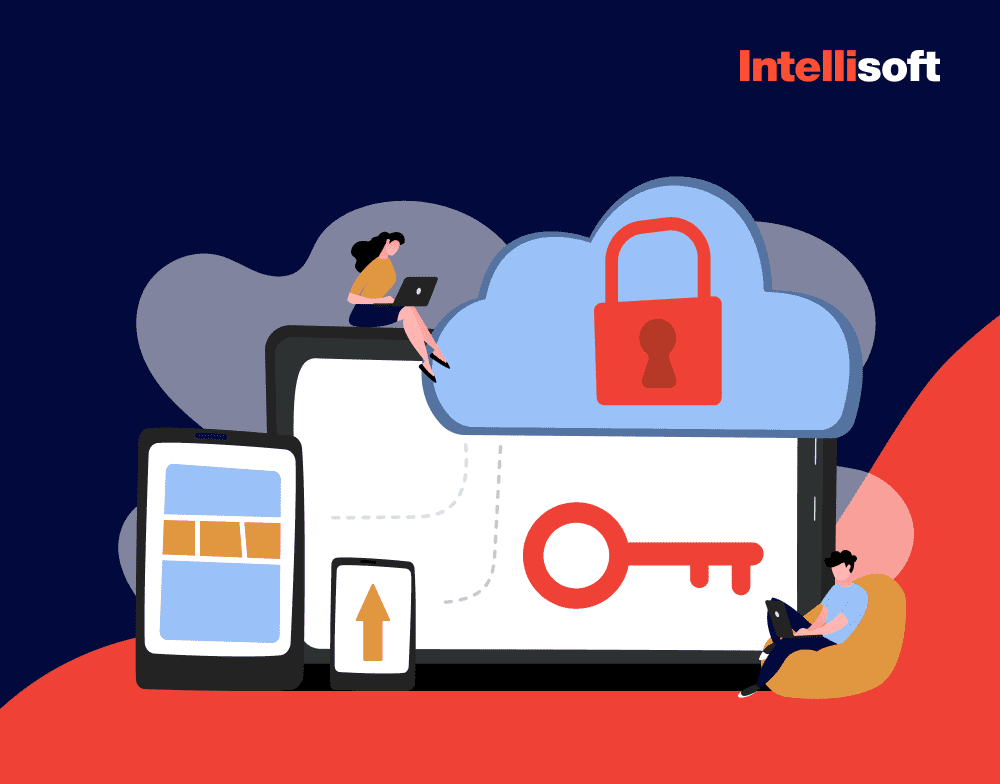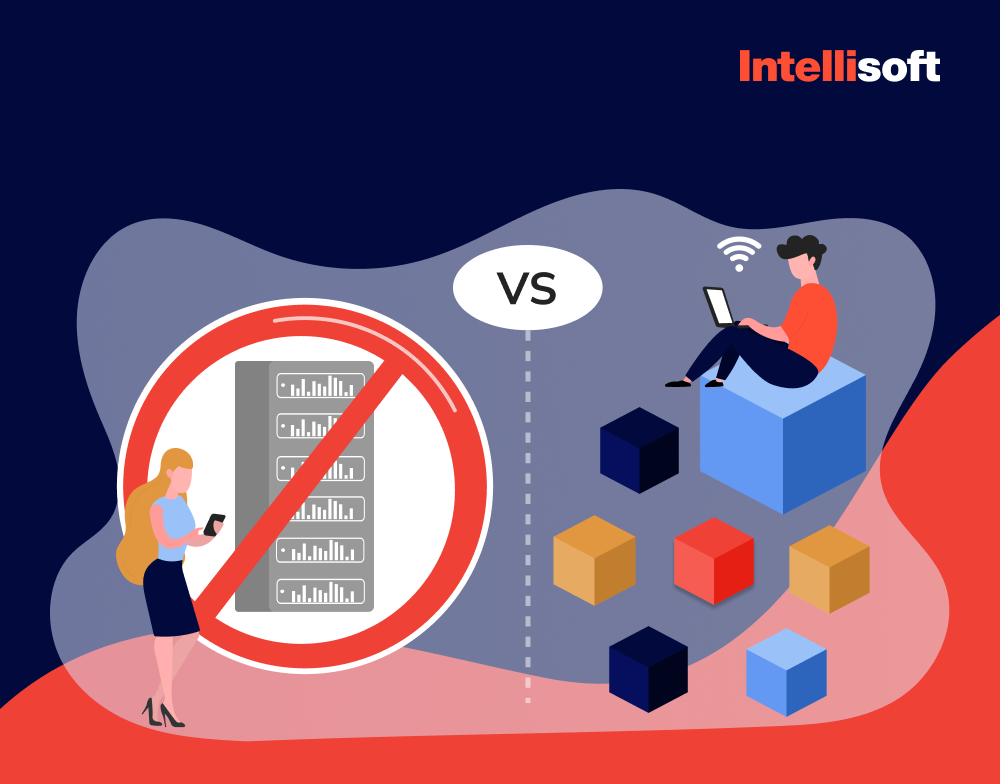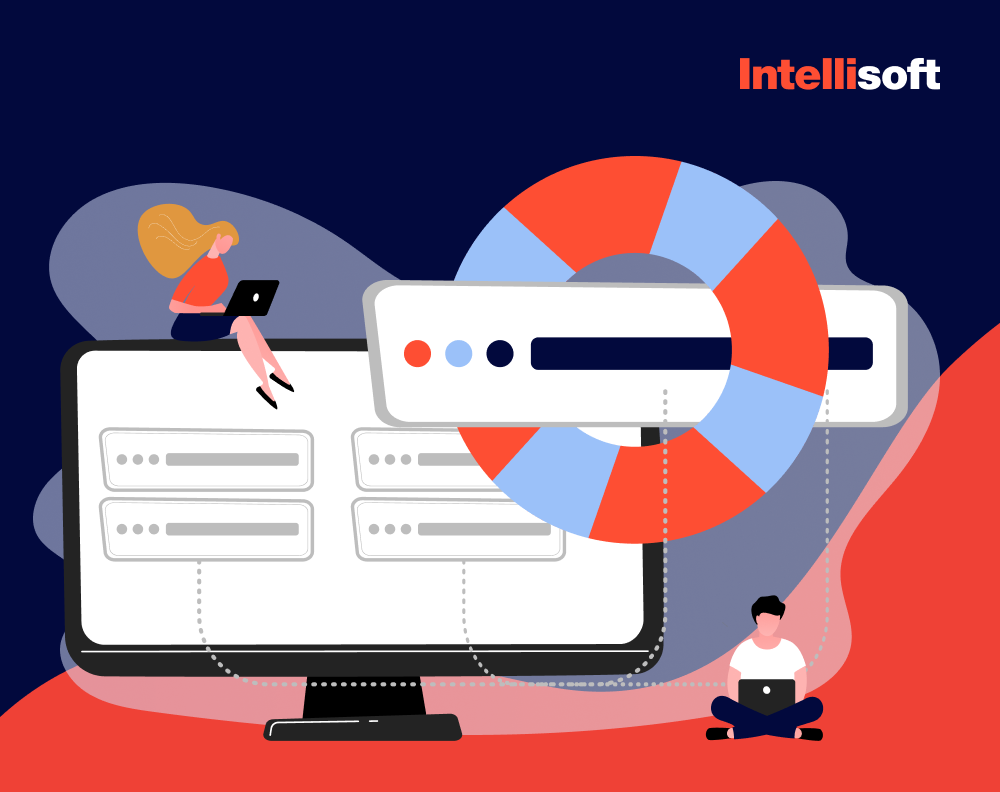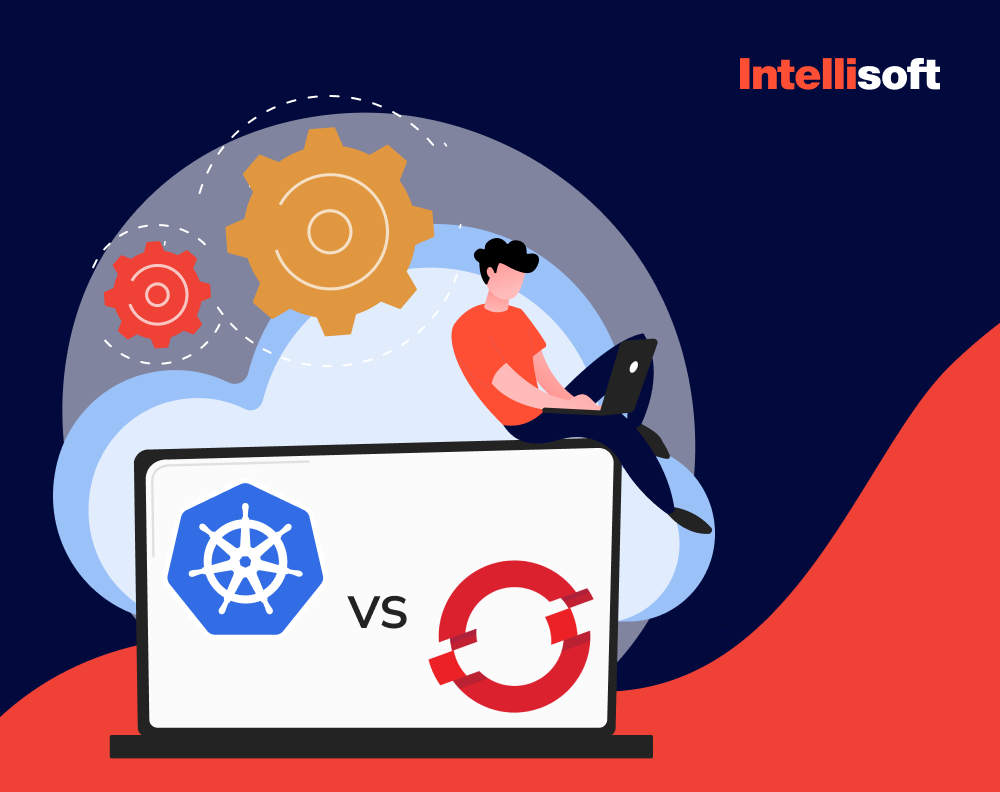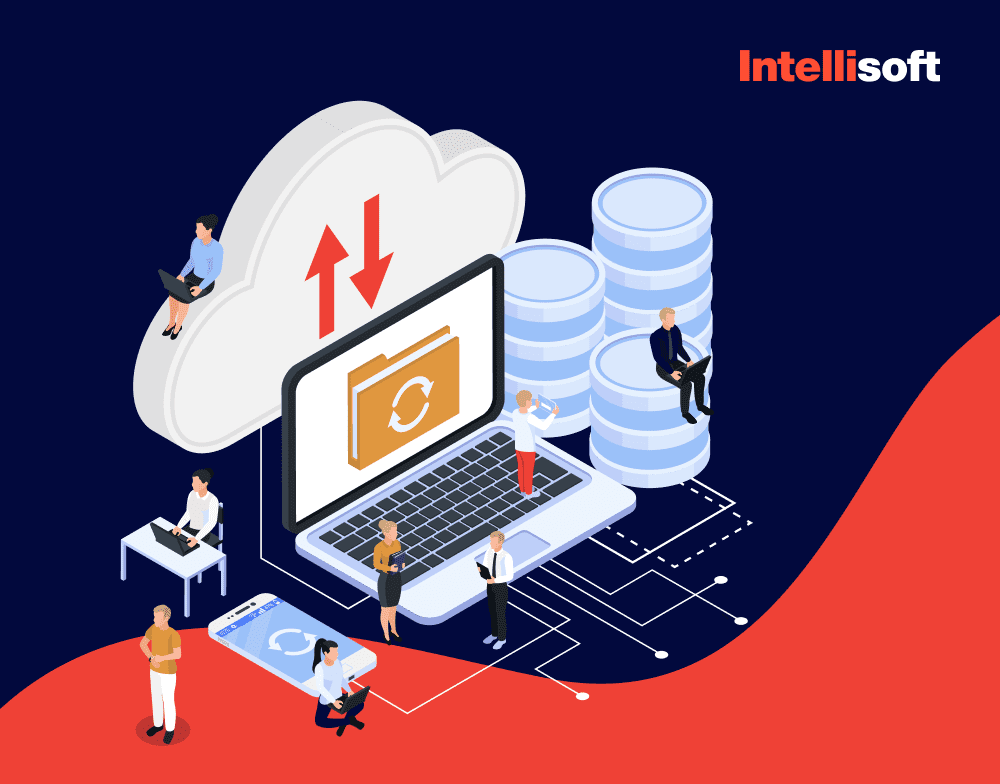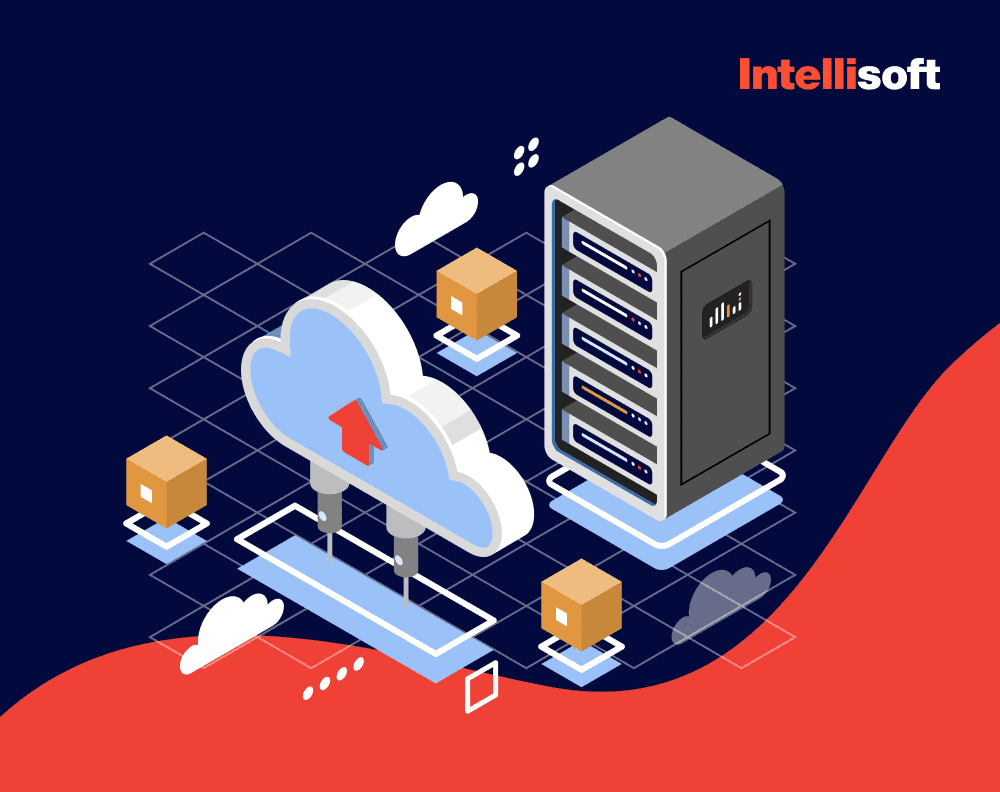Feel like you’re traversing a dense digital jungle when it comes to cloud app development? Welcome to our Guide to Cloud App Development, your digital machete to slash through the thicket of complexity.
As experienced adventurers who have scaled the cloud computing Everest more times than we can count, IntelliSoft is here to guide you through this expedition. With a mind-boggling statistic that the cloud applications market is expected to reach a value of 168.6 billion U.S. dollars by 2025, there’s no time like the present to sharpen your cloud savvy and stay ahead of the curve.
Over the next few scrolls, you’ll navigate the intricacies of Infrastructure as a Service (IaaS), Platform as a Service (PaaS), and Software as a Service (SaaS) development, and untangle the web of costs involved. So, let’s lace up those metaphorical hiking boots, grab your digital compass and let IntelliSoft lead the way through this cloud journey.
Table of Contents
Introduction to Cloud Application Development
In the digital age of the 21st century, apps play the dominant role. They’ve become the vital, rhythmic pulse of our daily lives – our productivity powerhouses, entertainment hubs, communication channels, and virtual assistants all rolled into one. From ordering a pizza with a tap, to hosting virtual meetings spanning continents, apps are undeniably transforming how we interact with the world around us. Among these, cloud app development is the maestro conducting this technological orchestration.
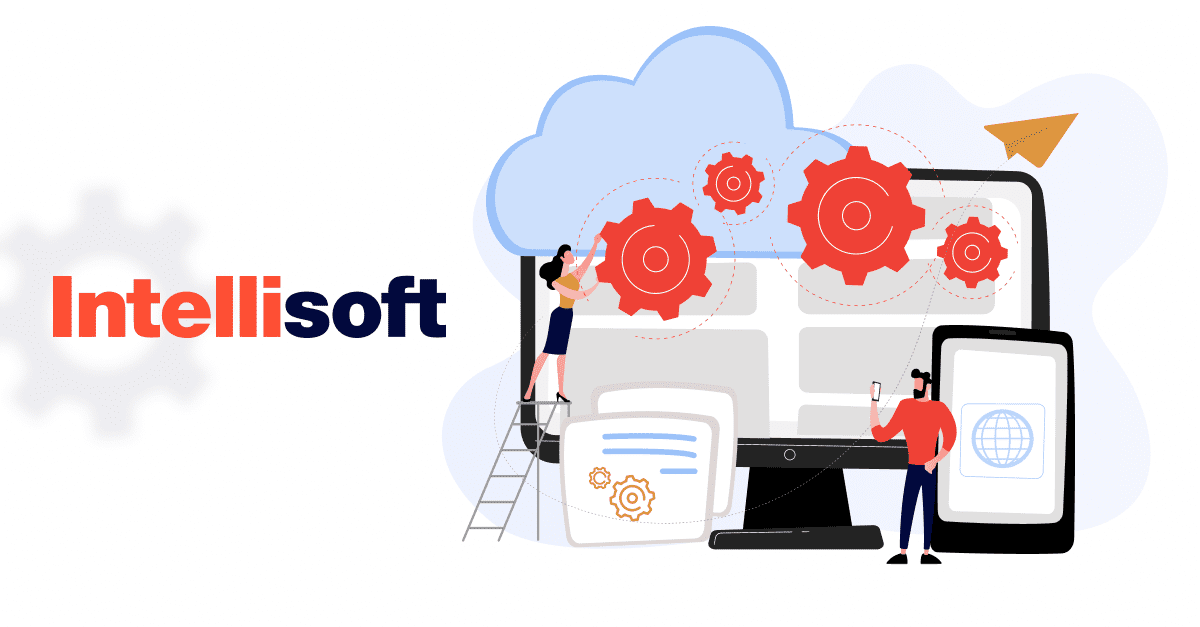
Cloud software development harmonizes an array of complex systems, platforms, and technologies. In essence, it’s a process that leverages cloud computing to create, host, and run applications on a cloud-based infrastructure. It takes the cake, or rather, the cloud, for its agility, scalability, and cost-effectiveness.
Cloud application development is at the forefront of this digital revolution, playing a pivotal role in shaping the tech landscape. Cloud apps have seamlessly integrated themselves into every industry, every business model, and even our personal lives. But what is a cloud-based app? It’s always accessible, effortlessly scalable, and offers unrivaled performance benefits. The cloud, it seems, is the limit.
Now, let’s march ahead into the cloud fray and introduce you to an important debate in the cloud app development space – Monolithic vs. Microservices architecture.
Monolithic vs. Microservices Architecture
Think of building an application in the cloud as if you’re constructing a Lego tower. Monolithic architecture is like building a tower with a single, giant Lego block. On the other hand, microservices architecture is like constructing the same tower using numerous smaller Lego pieces. Each has its pros and cons, and choosing between the two often feels like being stuck between a rock and a digital hard place. But we’re here to clear this clouded confusion.
In the red corner, we have monolithic architecture, the seasoned veteran of app development. Here, the application is built as a single, indivisible unit. All components, from the user interface to data processing, are interconnected and interdependent. It’s simple, straightforward, and can be very efficient for small-scale applications.
However, it’s not all sunshine and rainbows. Imagine if your Lego tower needs a design tweak or an additional block – you’d have to disassemble and rebuild the whole structure. Similarly, changes in a monolithic app, however small, require complete redevelopment and redeployment of the application. Plus, as the app grows, so does its complexity, often leading to longer development cycles and trickier troubleshooting. If one component fails, the whole app comes crashing down like a house of cards.
Now, enter the challenger, microservices architecture – the new-age marvel of cloud app development. Here, the application is a collection of small, independent services, each running its own process and communicating via APIs. Picture this – you want to add another block to your Lego tower. Easy! Just pop it onto the structure without disturbing the other pieces. Similarly, with microservices, you can update, deploy, and scale individual services without affecting the rest of the application.
Yet, microservices aren’t without their own share of hiccups. This architecture necessitates a higher level of coordination and management and may result in data consistency challenges and service dependencies.
So, which architecture is the cloud champion, you ask? Well, it’s not a one-size-fits-all answer. The choice between monolithic and microservices depends on factors like your business needs, project size, and development capabilities.
The Growing Importance of Cloud Apps
In the ever-evolving world of technology, standing on the brink of the next ‘big thing’ is a common experience. But, amidst these constant waves of innovation, one phenomenon has steadily climbed to the top of the tech hit parade – cloud applications. Their exponential growth, universal appeal, and undeniable benefits have made them an essential ingredient in the digital recipe for success.
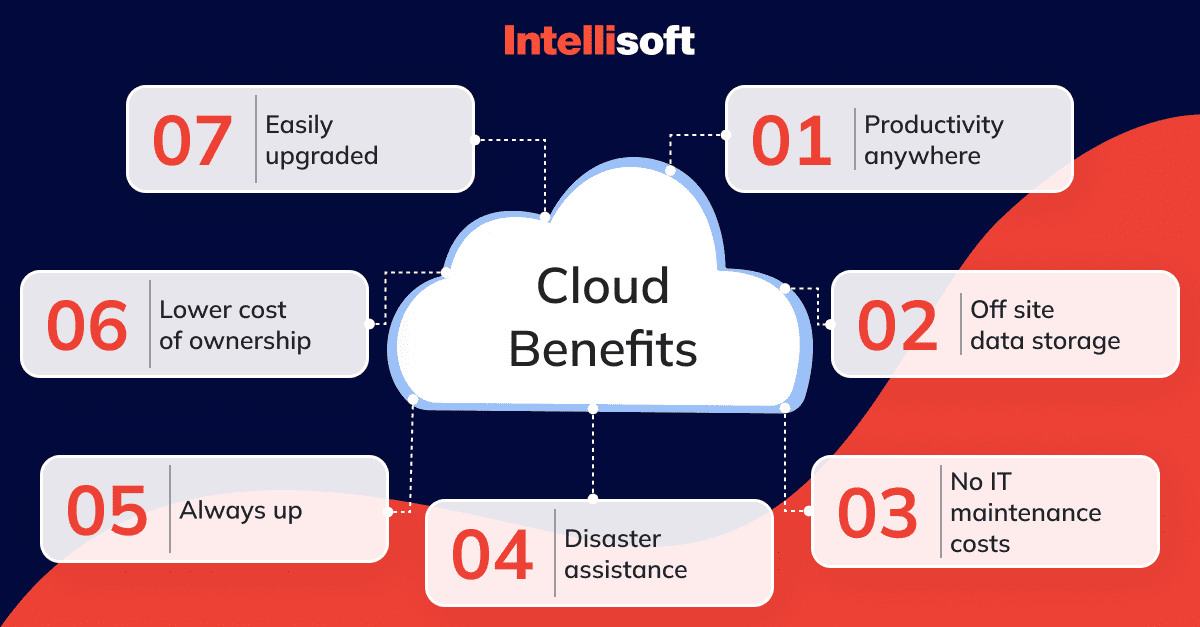
Benefits of Cloud Apps
Where do we begin? First, we have cloud apps’ unrivaled performance. Like sprinters on a racetrack, cloud apps dash at lightning-fast speed, offering stellar performance that puts traditional apps to shame. They live in the cloud, free from the shackles of device-based restrictions, delivering seamless user experiences.
Then, there’s the holy grail of any digital service – uptime. Cloud apps shine in this department, providing near-constant availability. Say goodbye to the dreaded ‘Server is down’ error messages. The cloud is always up, always on, like your favorite downtown diner that never closes.
One of the brightest incentives to create cloud applications is scalability. Got a sudden influx of users? No sweat! Cloud apps can scale up effortlessly, handling traffic peaks like a champ. And when the rush hour is over? They scale back down, preventing the wastage of resources.
Another advantage is the ease of updates. With cloud apps, patching up bugs or rolling out new features is as simple as refreshing a webpage. No lengthy downloads or pesky dialogue boxes. The updates happen behind the scenes, ensuring that users always have the latest, greatest version of the app at their disposal.
Security, often a significant concern in the digital realm, is also enhanced with cloud apps. They offer robust, enterprise-level security measures that are continuously updated and upgraded. Say ‘Adios!’ to security anxieties, as your data is protected by the cloud’s Fort Knox-like security.
Finally, cloud apps offer unparalleled opportunities for user research. They allow real-time monitoring and analytics, giving invaluable insights into user behavior, app performance, and potential improvement areas.
Rise of Remote Work
The modern workplace is no longer confined to a traditional office setup. With the advent of remote work, the office has become a virtual concept, capable of fitting snugly into your pocket. This seismic shift in the work landscape has caused a surge in the demand for cloud apps.
It’s no longer a matter of convenience, but an undeniable necessity. With cloud apps, teams can work together from any part of the globe as if they were all in the same room. The ‘virtual office in your pocket’ notion isn’t a futuristic dream anymore, but a living reality for millions of remote workers worldwide.
Business Cost Savings
The migration towards cloud apps isn’t just about technological prowess – it also makes excellent business sense. Adopting cloud apps can lead to significant cost savings for companies.
For starters, it cuts down on hardware costs. There’s no need for an armada of servers or high-end computers when your applications are happily floating in the cloud. Maintenance costs also take a nosedive, as most of the upkeep is handled by the cloud service provider.
Lastly, there’s the benefit of energy savings. A serverless office consumes less power, leading to lower energy bills and a greener footprint. The phrase ‘saving the environment while saving money’ has never been more accurate.
As you can see, cloud apps are not just a passing trend but a transformative force reshaping the landscape of business, work, and technology. Their growing importance is impossible to ignore, and those who embrace them are set to ride the wave of digital innovation.
Related readings:
- Docker and Microservices: The Future of Scalable and Resilient Application Development
- What is Cloud Computing? Understanding the Basics, Services and Benefits
- What Is Kubernetes And When to Use It: Key Trends in 2023
- What Are the Security Risks of Cloud Computing? Threats & Solutions
- Monolithic vs Microservices Architecture: Pros and Cons
Understanding Cloud Software Development
As the digital revolution surges forward, the demand for understanding cloud application development has never been higher. It’s the modern-day magic of creating versatile, accessible, and high-performance applications nestled comfortably in the stack of virtual servers.
What is Cloud Application Development?
The phrase ’building applications in the cloud’ might sound like tech jargon pulled from a Silicon Valley episode, but it’s actually quite simple. Imagine creating applications that don’t need to live on a user’s device but run on cloud servers instead. This type of software can be accessed over the Internet, much like tuning into a radio station – you don’t need the station in your living room, you just need a device that can catch the broadcast.
What are the key advantages of these cloud-based applications? Central data storage and access from anywhere, at any time. It’s like having a giant, invisible USB stick that follows you around, holding all your data and applications, ready for access whenever you need them. Whether you’re chilling on a beach in Bali or tackling spreadsheets in your New York office, your cloud apps are always within reach.
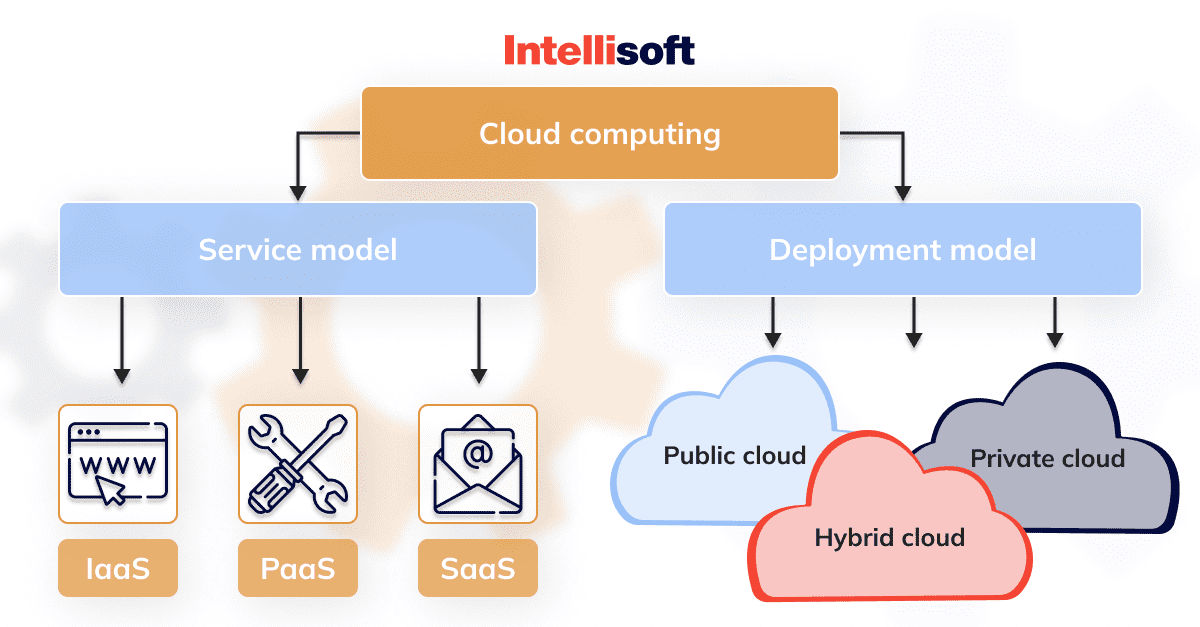
Different Types of Cloud Apps Deployment
When it comes to cloud apps, it’s not a one-size-fits-all scenario of cloud environments, each with its own unique set of advantages and best-use scenarios. Let’s break down the main contenders:
Public Cloud
Think of the public cloud as the town square of cloud computing – openly accessible and shared by multiple users. Public cloud services are usually provided by third-party providers and are ideal for businesses seeking cost-effective, scalable cloud solutions.
Private Cloud
If the public cloud is a town square, then the private cloud is your personal sanctuary. This cloud model is dedicated to a single organization, providing an exclusive and secure environment to operate. It’s perfect for businesses that prioritize data security and have the budget for a custom-tailored cloud environment.
Hybrid Cloud
Hybrid clouds are the best of both worlds. They combine elements of both public and private clouds, offering businesses flexibility, scalability, and security. It’s like having a private office with a key to the communal lounge – you get your own secure space, but you can also tap into shared resources when needed.
Community Cloud
This is a bit like a members-only club. A community cloud is shared among organizations with similar cloud requirements. For example, several non-profit organizations might band together to share the costs of a community cloud that meets their specific needs.
Main Types of Cloud Service Models
Now, let’s switch gears and explore the different types of cloud service models that these apps can leverage. To keep it digestible, we’ll focus on the big three cloud application as a service types: SaaS, PaaS, and IaaS.
Software as a Service (SaaS)
This is the model most people are familiar with. SaaS involves accessing software applications over the Internet on a subscription basis. You can be absolutely certain that installation and maintenance are something you don’t need to worry about. Just log in, and you’re good to go. Examples of SaaS are abundant: think Gmail, Salesforce, or Slack.
Platform as a Service (PaaS)
Here, the provider gives you the platform and environment to develop, test, and manage your own applications without the headache of maintaining the underlying infrastructure. It’s like being given a fully-stocked, self-cleaning kitchen in which you can cook up any dish you like.
Infrastructure as a Service (IaaS)
The most flexible of the three, IaaS provides businesses with a virtualized computing infrastructure managed over the Internet. Imagine having a fully customizable virtual office building where you can rearrange the layout, add or remove rooms, and even change the location without breaking a sweat.
Understanding the types of cloud environments and the services they offer is a vital step in navigating the universe of cloud app development. Each model has its strengths and is suited to different business needs and objectives. Now that we’ve lifted the veil on these key concepts, you’re well on your way to harnessing the power of the cloud!
Key Steps in Cloud App Development
The journey of cloud application development is a complex process, requiring strategic planning and careful decision-making. In this section, we’ll discuss the first vital steps you need to take on this journey.
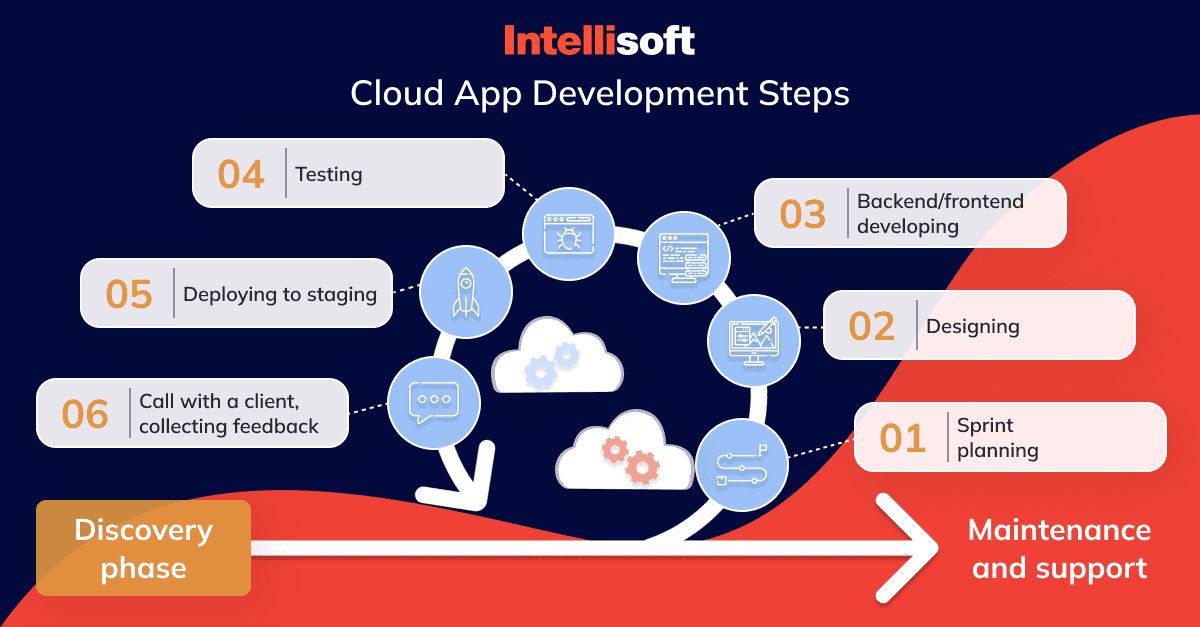
Defining the Concept
The creation of every successful cloud app commences with the foundation stone of a well-defined concept. Starting this exciting journey of development is like sailing a ship – without a set course and an understanding of the waters you’re navigating, you risk getting lost and straying from your destination. The concept is your compass, pointing you towards the true north of your project’s success.
So, let’s start by addressing a fundamental question: What problem will the app solve? By identifying a specific issue that your app can address, you not only create a compelling reason for its existence but also set the wheels in motion for a clear, directed development path. This essential step is like the golden thread in your project tapestry, guiding decision-making and keeping the project tightly woven and well-aligned with the user’s needs.
The second equally pivotal question to address is: Who is the app for? The answer provides a mirror reflecting your audience’s needs and wants, an invaluable tool for shaping your cloud app’s design, functionality, and user experience. It is important to understand your intended audience to create an app that perfectly meets their needs.
By answering these two critical questions you are paving a well-lit path toward building a cloud application that is not only functional but also relevant and user-focused.
Choosing the Right Cloud Service Provider
Selecting a cloud service provider is a critical decision that could significantly impact your app’s performance, efficiency, and overall success. This choice is equal to selecting the backbone of your app – it lays the foundation for the entire infrastructure and largely influences the app’s robustness and scalability.
When choosing a cloud service provider, there are several key factors to consider:
Cost
The financial implication is one of the most crucial aspects to consider. Cloud service providers typically offer a pay-as-you-go model, meaning you only pay for the resources you consume. However, pricing can be complex and vary depending on the type and level of service you need. It’s important to thoroughly understand the pricing structure, including any potential hidden costs.
Security
Ensuring the security and privacy of your app and data is paramount. The provider should have robust security measures in place, including firewalls, intrusion detection, and encryption. You should also understand the provider’s policy regarding data breaches and their responsibility in such events.
Scalability
As your business grows, so too will your need for resources. Your chosen provider should offer flexible and scalable solutions that can adapt to your ever-changing needs, whether that means increased storage, more computing power, or additional services.
Range of Services
Different providers offer different services, from simple storage solutions to complex machine-learning platforms. Think about the services you require presently and in the future.
Three of the most prominent providers are Amazon Web Services (AWS), Microsoft Azure, and Google Cloud Platform (GCP).
AWS is the longest-running cloud service and, as such, offers an extensive range of services. Whether you need storage, computing power, database services, machine learning, or analytics, AWS likely has a solution. AWS also has broad geographic coverage, meaning it can deliver content quickly and efficiently to almost any part of the globe.
Azure, owned by Microsoft, is another excellent choice, especially for businesses heavily invested in Microsoft products. Azure integrates seamlessly with other Microsoft products like Office 365 and Dynamics 365. This integration can reduce complexity and improve efficiency in your app’s infrastructure.
Google Cloud Platform, on the other hand, is known for its user-friendly interface and competitive pricing. Google has leveraged its immense computing power to offer robust and scalable solutions. GCP is particularly strong in data analytics and machine learning services.
Each of these providers has its strengths, and the optimal decision will rely on your particular requirements and situation. It’s crucial to take the time to understand what each provider offers and how it aligns with your business objectives.
Finding a Reliable Development Team
The development team you choose to create your app plays a pivotal role in the success of the project. You have several options to consider: Creating an in-house team, hiring freelancers, or outsourcing the project to a professional cloud app development company. Each option has its strengths and weaknesses, and the best choice depends on the specifics of your project and your resources.
In-House Team
Building an in-house team of developers, designers, testers, and project managers may seem like an appealing option. This approach allows you to have complete control over the development process, and communication is typically seamless due to close proximity. However, this can be the most expensive option as it includes salaries, benefits, training, and other associated costs. Additionally, it takes time to hire and train a skilled team, which could delay the start of your project.
Freelancers
Hiring freelancers is another option that offers flexibility and can be cost-effective for smaller projects. With this approach, you can bring in experts for specific tasks or stages of the project, making it a versatile solution. However, freelancers may juggle multiple projects at once, which could impact their availability and focus. Moreover, managing a team of freelancers can lead to inconsistencies in the development process and potential communication issues.
Outsourcing
Outsourcing your project to a professional cloud software development company, like IntelliSoft, is often the most efficient solution, especially for large-scale projects. Companies like ours have dedicated teams of experienced professionals who specialize in different areas of app development. They can deal with all aspects of the project, from planning and development to testing and launch.
Additionally, we can provide ongoing tech support, which is essential for the maintenance and scaling of your app. While outsourcing might seem expensive at first glance, it can be more cost-effective than building an in-house team when considering the extent of skills and services you receive.
When choosing a development team, it’s important to consider factors such as the team’s experience, expertise, reputation, and the level of support they offer. You should also consider their understanding of your business needs and their ability to deliver a product that aligns with your business goals. In the end, the right team will depend on your specific project requirements, budget, and timeline.
Designing and Developing the Cloud App
The design and development phase is where your cloud app starts to take shape. Here, your vision transforms into a tangible prototype. The process involves several key steps:
Designing the user interface
The user interface refers to the graphical component of your application. It’s what your users see and interact with. A well-designed interface is intuitive and user-friendly, ensuring a positive user experience.
Coding
This is where developers breathe life into your app. They take your design and convert it into a functioning product.
Integrating with other systems
Most apps need to interact with other software systems. Whether it’s an email service, a payment gateway, or a customer relationship management system, your app will need to be integrated effectively.
Developing functionalities
The core features of your app are developed during this stage. These functionalities are the building blocks of your app, providing the value that your users are looking for.
Testing the Cloud App
Testing comes into play after the completion of the app’s development. The aim is to ensure that the app performs as expected in the real-world scenarios that users will encounter. Testing helps to identify and rectify any bugs, security vulnerabilities, and other issues that may hamper the app’s performance or user experience.
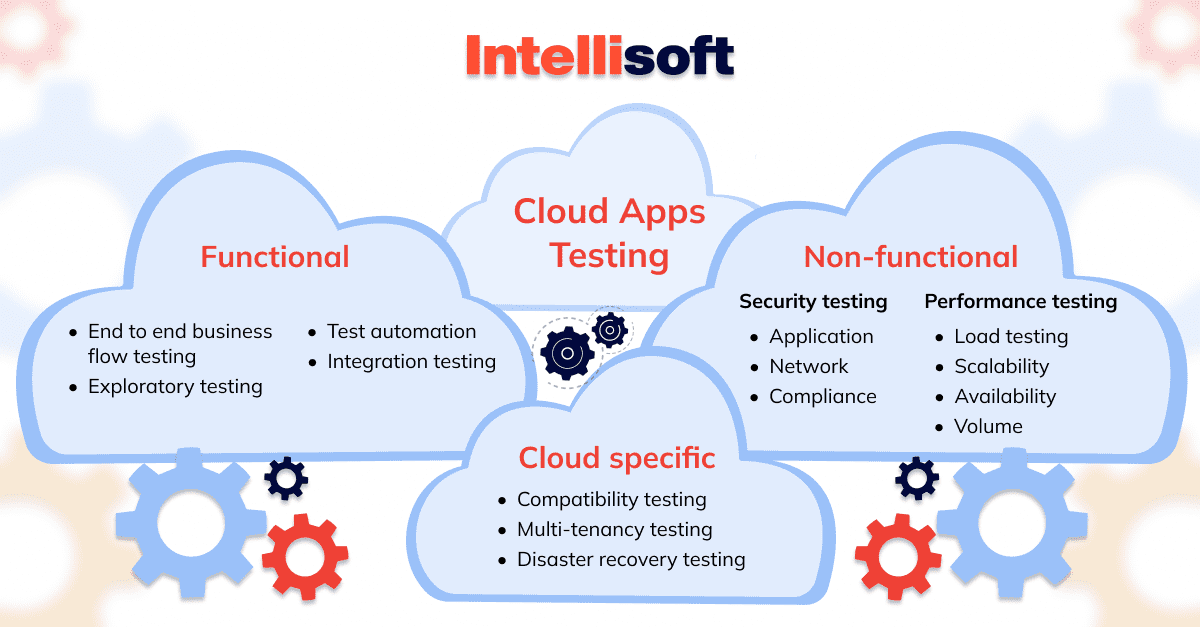
Let’s take a look at some of the key aspects of testing a cloud-based app:
Functional Testing
This is a type of testing that verifies if the app functions as it’s supposed to, according to its specifications. Functional testing involves testing all the app’s functionalities, such as user interfaces, APIs, databases, client/server communication, and more. The aim is to ensure all these aspects work together seamlessly to provide a smooth user experience.
Performance Testing
Cloud apps need to be fast, responsive, and reliable. Performance testing evaluates how the app behaves under different levels of load, what its response times are, and how quickly it can process requests. This helps to ensure the app can handle real-world use and traffic spikes without a decrease in performance.
Security Testing
Because cloud apps often handle sensitive data, they need to be secure. Security testing identifies any vulnerabilities in the app that could be exploited by hackers. This involves testing the security measures in place, such as encryption and authentication methods, as well as the app’s ability to withstand attacks.
Usability Testing
This is all about the user. Usability testing evaluates the app’s user interface and overall user experience. It checks how intuitive and user-friendly the app is, how easy it is to navigate, and whether it meets the user’s needs and expectations. Feedback from this stage can lead to design changes that make the app more appealing and easier to use.
Compatibility Testing
Since users may access the cloud app using a variety of devices, operating systems, and browsers, it’s crucial to verify the app’s compatibility across all these platforms. Compatibility testing ensures the app functions properly and looks good regardless of the user’s device or browser.
Scalability Testing
Scalability testing is particularly important for cloud apps because it ensures the app can handle growth. This type of testing checks whether the app can scale up to meet increased demand, whether it’s more users, more data, or increased functionality.
After testing, any identified bugs or issues are fixed, and the app is retested to ensure the problems have been properly addressed. Only once the app has passed all these tests and meets all the necessary standards, can it be released to the users. It’s worth mentioning that testing is not a one-time process, but an ongoing one, as new issues can emerge as the app is used, updated, and scaled.
Deploying the Cloud App
After all the hard work of concept definition, design, development, and testing, it’s time for the final and most exciting step: deployment. This is when your app becomes available for users to access. It’s the culmination of all your efforts where your app finally gets to serve its purpose.
Remember, when you build a cloud application, the project doesn’t end with deployment. In fact, it’s just the beginning. Maintenance, updates, and improvements are an ongoing part of the app lifecycle, ensuring that it continues to meet user needs and stay ahead in the competitive market.
The Cost of Cloud App Development
Starting a cloud app development project is an investment. It’s like setting up a business: There are initial costs, ongoing expenses, and potential profits. But what exactly goes into the financial side of cloud app development? Let’s take a closer look.
Factors Influencing the Cost
The complexity of the app
Just as a multi-story building with complex architecture costs more than a simple one-story home, the complexity of an app influences its development cost. If your app has many features, advanced functionalities, or intricate designs, it will require more time, skills, and resources to develop.
Chosen cloud service provider
Different cloud service providers have different pricing models. The choice between AWS, Azure, Google Cloud, or others can impact the cost of your app.
Resources needed
The number of developers, the scope of their tasks, the required tools and technologies – all these resources add up to the cost of development.
Development time
The longer the development process, the higher the cost. However, rushing through development can lead to errors which could end up costing even more in the long run.
Estimating the Cost
Getting a clear estimate of the cost of cloud app development involves considering both initial and ongoing costs.
Initial development costs
These costs cover everything from defining the concept, designing and developing the app to testing and deploying it.
Maintenance, updates, and cloud service fees
Post-deployment costs are also a crucial part of the budget. Maintenance is necessary to ensure the app continues to function correctly, while updates are needed to add new features or improvements. Cloud service fees, on the other hand, are the costs you pay to the cloud service provider for using their infrastructure.
A professional cloud app development company like IntelliSoft can provide you with a comprehensive cost estimate. Armed with experience and industry knowledge, we take into consideration all the influencing factors and potential costs, ensuring a fair and transparent estimate. Remember, the goal isn’t to find the cheapest solution, but the one that provides the best value for your investment.
Conclusion
As we progress along the superhighway of the information age, the significance of cloud apps has never been clearer. This article set out to demystify the world of building cloud applications, and hopefully, we’ve shed some light on the process.
We discussed the difference between monolithic and microservices architecture, emphasized the growing importance of cloud apps, and delved into understanding what cloud app development actually entails. We touched upon different types of cloud apps, the variety of cloud application development services, and walked you through the key steps of the development process, from defining the concept to deploying the app.
But any journey into the clouds must come with an understanding of the costs involved. We tackled factors that influence the cost of cloud app development and how to estimate these costs effectively.
This vast arena of cloud-based application development might seem intimidating, but with the right team in your corner, it doesn’t have to be. Let IntelliSoft become your trusted companion for this journey. With our wealth of expertise and experience, we are happy to help our clients navigate the complex terrain of cloud app development. We believe in building powerful, efficient, and cost-effective cloud apps that address your needs and exceed your expectations.
With IntelliSoft, you’re not just getting a service – you’re getting a partnership. Our team of experts is devoted to understanding your vision, offering support at every stage of the development process, and ensuring that the final product is a perfect match for your business. So, why wait? Join us on the journey to the cloud and experience the IntelliSoft difference today.

